The Kiso valley
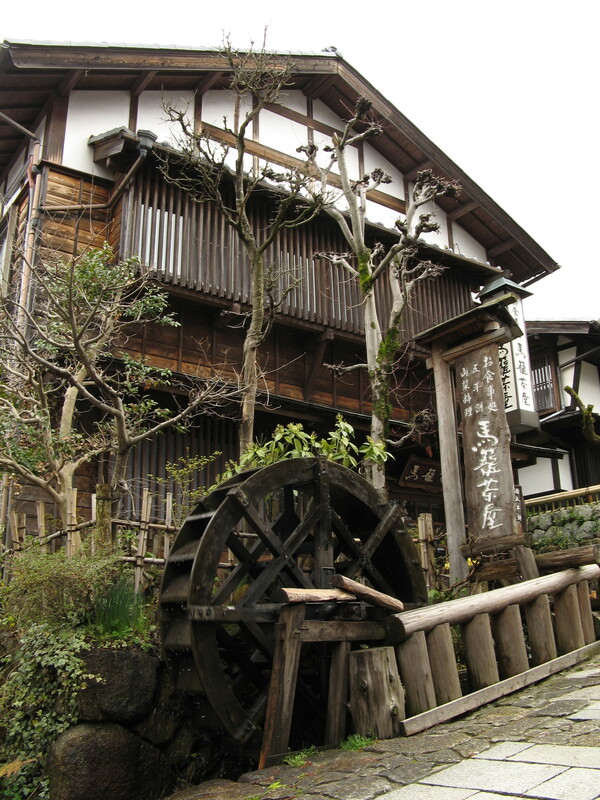
Traditional house, Magome |
In Tokugawa-era Japan (1600-1868) travellers had two main roads to choose between when travelling between the official imperial capital of Kyoto and the seat of power, which was Tokyo (then called Edo). One was the Tokaido, which followed the coast and required the fording of several large rivers. Another was the Nakasendo, which crossed the mountains of central Japan without crossing any major rivers. These roads were much travelled by, as the Tokugawa shogunate required all daimyos (feudal lords) to reside alternate years in Tokyo (so it could keep an eye on them), and both became very important parts of Japanese national culture.
The shogunate established post towns along these roads to provide services to the travellers. In the Kiso valley, one of the most famous sections of the Nakasendo, two of these post towns have been preserved much as they were centuries ago, and tourists can walk the stretch of the Nakasendo between them over a low pass in the mountains.
We thought this sounded like it was worth visiting, and so travelled up with a regional train from Nagoya to Nakatsugawa, planning to take the bus from there. We alighted at Nakatsugawa in the afternoon together with a group of exuberant teenagers in school uniforms, presumably on their way home from school. The crowd coming off the train quickly dispersed, leaving us alone in nearby the bus station. Well, "bus station" is perhaps overstating it. It was just an empty lot with marked spaces for the buses to line up before leaving.
We tried to find a bus going to Magome, our first stop, on the signs, but failed dismally. Our search through the signs in the station was not helped by the Kanji characters for Magome being decidedly complex: 馬籠. So we approached a driver, who turned out to speak zero English. In a mix of Japanese and sign language we worked out that the bus to Magome would turn up at platform 5 in one hour. We decided we were too hungry to wait, and armed with new-found confidence in our Japanese-speaking ability we took a taxi instead.
Magome turned out to basically be a steep and narrow flagstone road lined by old wooden houses on both sides. Remarkably, there were no signs of anything modern at all, except some electric lights and our taxi. It dropped us off at one house, which at first sight looked no different from the others, but on closer inspection this turned out to be a minshuku (traditional inn) called Magomechaya.
It seemed to be a family-run business, and although they spoke no English at all they were clearly used to gaijin visitors, and handed out some printed sheets with all the information we needed in English. Our room was traditionally furnished room, which in Japan means it was barely furnished at all. The bathrooms were shared, with the usual shared Japanese bathroom slippers.
We'd seen on the way up that Magome was now basically completely deserted, probably because it was late. This was up in the mountains, so there was nothing nearby, except the houses along the road. And as far as we could tell, they were all shut for the night. So we were quite anxious to get some food, and asked our hosts about this. We spent a long time trying to communicate that we wanted food, with them alternating between not understanding at all, and saying there was none to be had. Eventually, we gave up, and went outside to try our luck.
Just across the road there was one place that seemed like maybe it would be worth looking at, and this turned out to be the restaurant of the inn, where people were just being served their dinners. There were even two seats reserved for us. So clearly we could have saved ourselves a lot of trouble by not asking. And, most surprising of all, we were served a local beer, called Kisoji Beer. I had no idea there were breweries in the area, but this of course made my beer-hunting antennae go on high alert.
Once dinner was over, we headed out to see what there was to be seen. We pretty quickly established that there was nothing going on in Magome at night. And I really mean nothing. Every house was closed, and there were no shops, kiosks, pubs, restaurants, or anything else of any description whatsoever that was open. In addition, it was pretty dark, so we quickly returned to the inn.
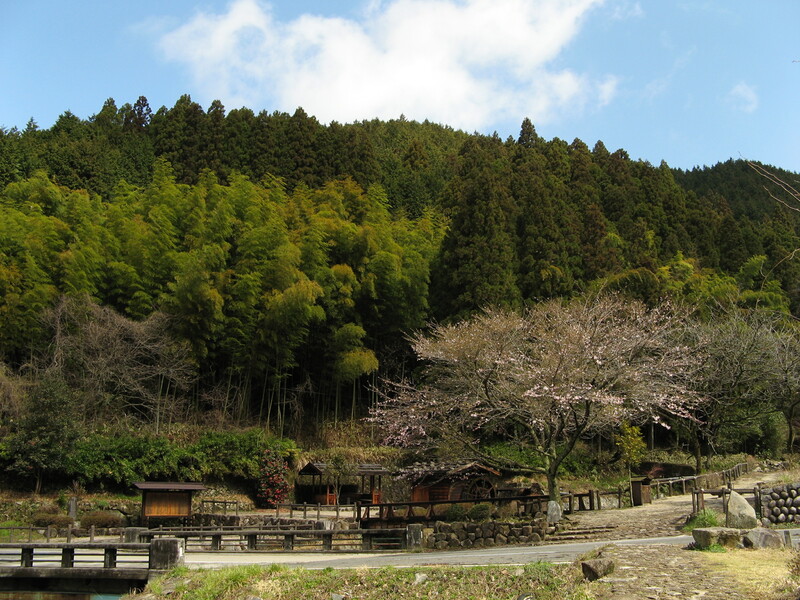
Mill by the road, Kiso Valley |
Next morning, we handed over our luggage to the local tourist office for transportation to Tsumago, and set off on foot. The road climbed on up through the village and then further up the valley for a couple of kilometers. Most of the way it was paved with old flagstones, and was lined with forest on both sides. It followed a little river some of the way, and occasionally we'd pass private houses. I quickly realized that Japan wasn't as densely populated as I'd thought. At least not out here, it wasn't.
Eventually, the road reached a little pass at the top of a ridge, and then plunged down a little valley towards Tsumago. On this stretch there were more little villages and houses. A small stream followed the road, and had been harnessed by the locals for all kinds of purposes. In one village it seemed to be used to raise fish in little concrete tanks. By many houses it was diverted into small stone basins for house use, and once these were filled, the stream would flow on. Further down it powered two wooden puppets which creakily moved up and down, greeting passers-by. Everywhere people used the water, then let it move on to their neighbours.
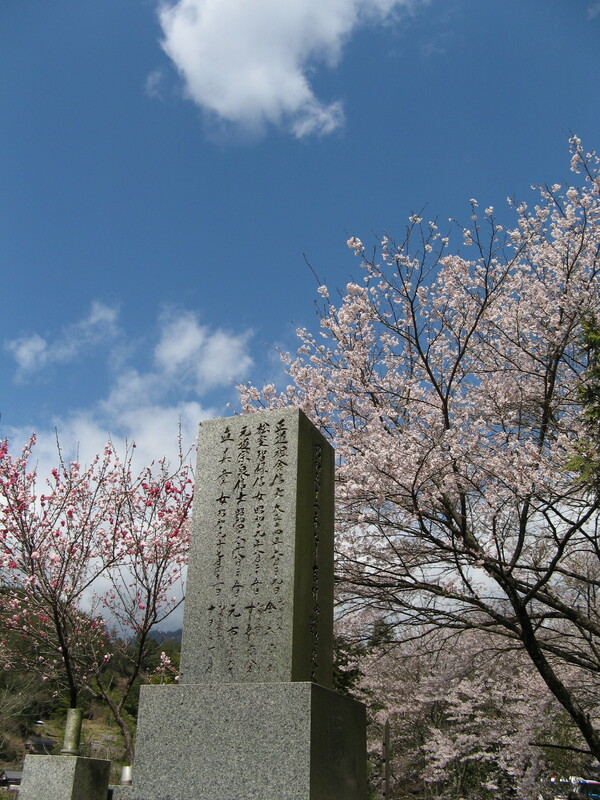
Roadside cemetery, Kiso Valley |
Finally, we crossed a little river, passed a small cemetery, and entered Tsumago, after about 2 hours of leisurely walking. Tsumago looked pretty much like Magome, but since this was around noon there were lots of tourists, and the wooden houses turned out to contain little cafés, inns, and craft shops. Again, all of this was tastefully housed in traditional buildings with not so much as a modern plastic sign to break the traditional feel.
It took us about an hour to exhaust the charms of Magome, and since lunchtime was approaching I wanted beer. I'd come across a poster for Kisoji Barley House, the place which made the local beer I'd had the evening before, and this turned out to be a kind of brewpub with several more beers. We'd been told that this was in Tsumago, but hadn't seen it, so we approached the tourist information, and was told that it was a bit outside Tsumago, but that there was a shuttle bus. The bus left from the tourist car park outside the town, and climbed further up the hills for about 10 minutes, then stopped at a kind of modern resort hotel, which clearly was the Barley House.
The place turned out to be a huge tourist complex with a hotel, a traditional bath house, and a restaurant serving lunch where we could sample the beers. It did not look even remotely Japanese, however. In fact, it looked thoroughly American, of the type that has been slapped up in about a week, using that peculiar American concrete which looks like plastic. The colour scheme was more Japanese, with dark green and mustard yellow, and made it look like a cross between an office and the resort hotel it really was.
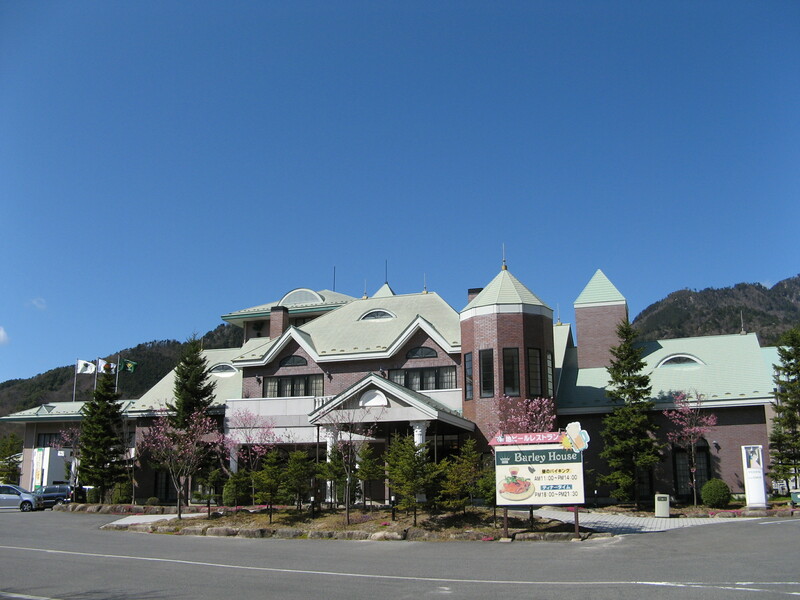
Barley House, near Tsumago |
The lunch was what the Japanese call Lunch Baikingu (literally "viking lunch"), which is a buffet. Why the Japanese would associate buffets with the vikings I really can't say. If the vikings ever ate from buffets I haven't heard of it. The food was a kind of Japanese interpretation of western cuisine, rather indifferently executed. The beers, unfortunately, were of the same ilk. They were competently done, but rather low on taste, and I didn't really care that much for any of them. The porter was probably their best, but even that was watery.
What was anything but indifferent, however, was the service, as in so many other places in Japan. We were allocated an English-speaking waiter, who really worked somewhere else. He was really happy to get a chance to practice his English, to meet some gaijin, and even happier because we were Scandinavian. So he enthusiastically guided us through the beer selection, fielding questions about them, and chatting about this and that. When we left he followed us to the door.
After this we took the shuttle bus back to Tsumago and settled into a minshuku in the village. We had time for a quick bath each in the communal bathroom before dinner, which was a very traditional Japanese affair, consisting of a collection of small dishes. The first surprise on the menu was a whole fried fish. Eating this with chopsticks turned out to be a bit of a challenge, but by gripping parts of the fish meat firmly and twisting it off, we managed to pry loose most of the meat.
Then there was a dish we couldn't quite identify. It came together with some little bowls of what was clearly different kinds of boiled sea-weed, but didn't quite look like seaweed. We puzzled over this for a while, before my girlfriend picked up a little piece, and chewed on it. "Insect," she announced. It really was. Little insects fried in soy sauce. I have to confess that this made me shudder, and suddenly all the seaweed started looking like little crawling insects. Well. Luckily there were enough other things to fill me up.
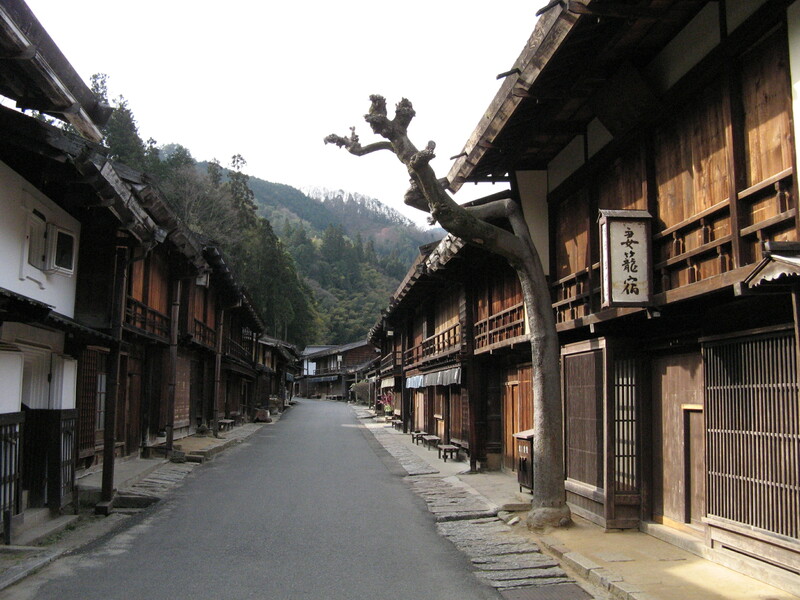
Main street, Tsumago |
Similar posts
Three Weeks in Japan
Japan was the first country in the far East I visited, way back in 2002
Read | 2007-05-29 23:22
The deserted cave city of Chufut-Kale
From the khan's palace in Bakhchysarai we took a marshrutka a couple of kilometers up the valley, to the next sight
Read | 2014-03-16 13:24
Japanese beer
Japan is not, of course, a country with any great beer tradition to speak of, and so one may be forgiven for thinking that it's all a dreary swamp of bland pale industrial lager
Read | 2007-06-04 20:52
Comments
Chen Soon Kuan - 2012-03-11 20:22:38
Very informative . I will be in Kamikochi in May and was wondering whether I should include Kiso valley in my trip as well